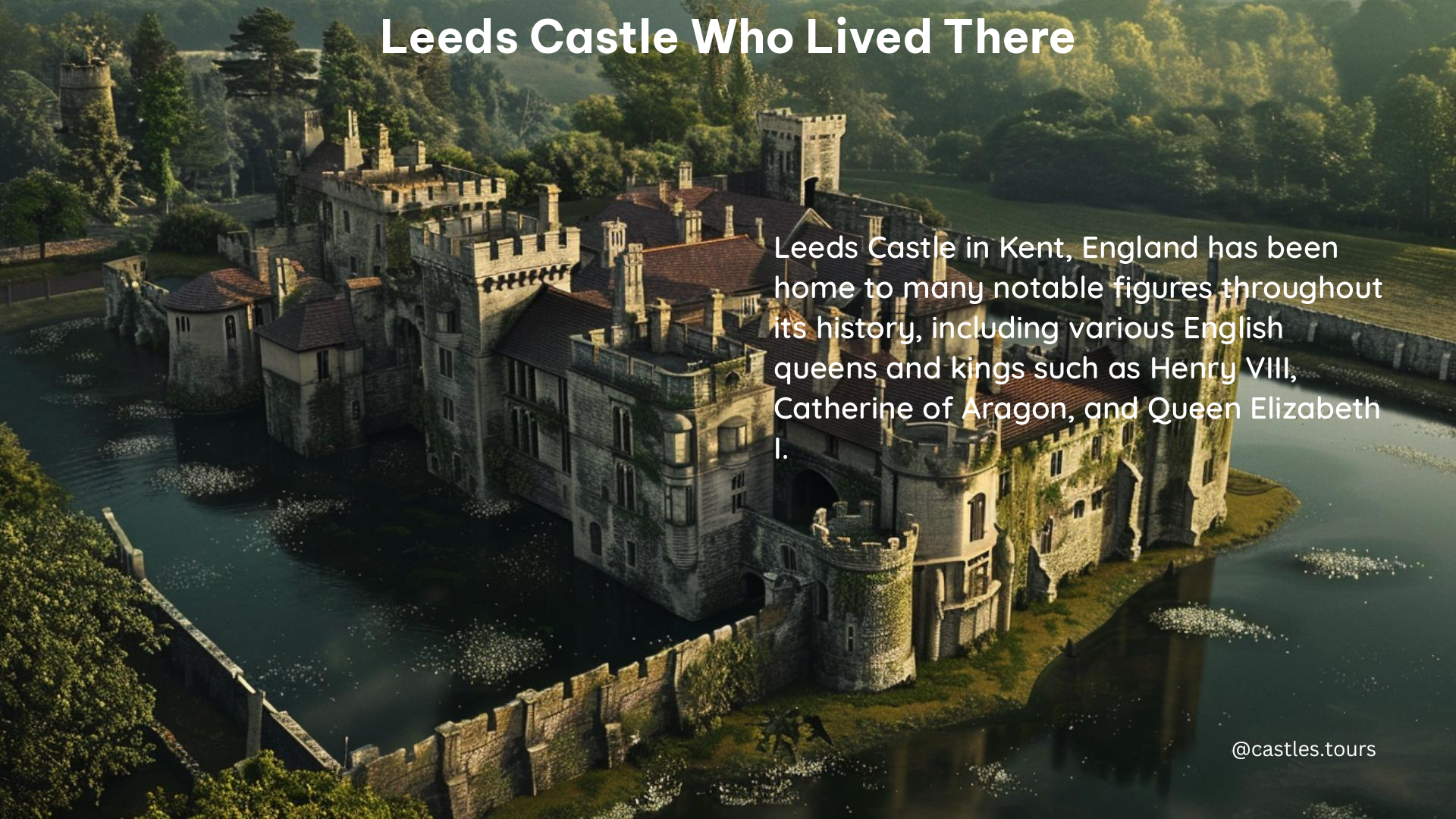Leeds Castle, located in Kent, England, has a rich history spanning over 900 years. This magnificent castle has been home to a diverse array of notable individuals, each leaving their mark on its storied past.
The Founders: Robert de Crevecoeur and the Normans

The castle’s origins can be traced back to 1119 when it was built by Robert de Crevecoeur, a Norman nobleman, as a fortified stronghold. Nicknamed “Robert the Broken Hearted,” he constructed the castle on the site of an earlier Saxon manor house, establishing Leeds Castle as a significant Norman presence in the region.
Royal Residents: The Plantagenets and the Tudors

Over the centuries, Leeds Castle has welcomed several members of the English royal family. In 1278, King Edward I and Queen Eleanor of Castile acquired the castle, making it a favorite royal residence. They undertook extensive renovations, including the addition of the Gloriette, glass windows, the Queen’s Baths, and a barbican and fortified mill.
The castle’s royal connections continued with King Edward II, who granted it to Bartholomew Badlesmere in 1318. However, the king later besieged and captured the castle after Badlesmere’s wife, Margaret, refused entry to Queen Isabella and fired arrows at the royal party.
The castle’s Tudor era was marked by the presence of King Henry VIII, who transformed it between 1517 and 1523 for his first wife, Catherine of Aragon. He added an upper floor to the Gloriette, including a private bedchamber and bathroom for the queen, and built the Maiden’s Tower for the queen’s ladies-in-waiting.
Imprisoned Royals: Queen Joan of Navarre and the “She-Wolf of France”
Leeds Castle has also witnessed the imprisonment of several notable figures. In 1403, King Henry IV granted the castle to his second wife, Queen Joan of Navarre. However, she was later accused of witchcraft and imprisoned at the castle for four years.
Another royal figure who stayed at the castle was Queen Isabella, also known as the “She-Wolf of France.” In 1321, she was denied entry by Margaret Badlesmere, leading to the siege and capture of the castle.
A Twentieth-Century Transformation: Lady Olive Baillie
In the 20th century, Leeds Castle underwent a significant transformation under the ownership of Lady Olive Baillie. Baillie purchased the castle in 1926 and dedicated herself to restoring it to its former glory. During her tenure, the castle became a center of lavish hospitality, entertaining celebrities, ambassadors, and royals alike.
Conclusion
Leeds Castle’s rich history is a testament to the diverse array of individuals who have called it home. From its Norman founders to the Plantagenet and Tudor royals, and from the imprisoned queens to the 20th-century hostess, Leeds Castle has witnessed a captivating and ever-evolving story. As a Castles Touring Enthusiast, exploring the castle and uncovering its fascinating past is a truly rewarding experience.
